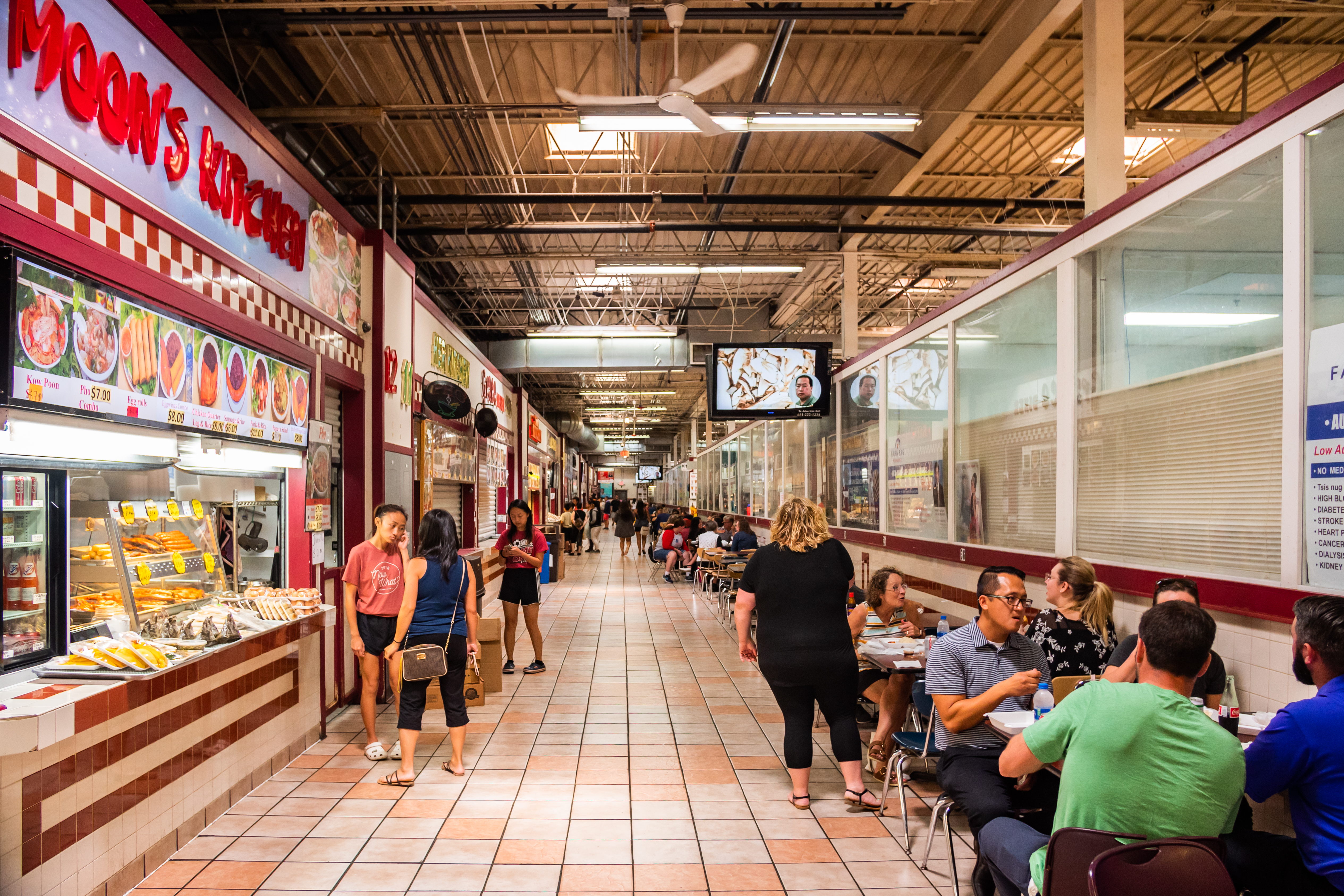
Where to Find Hmong Culture & Cuisine in the Twin Cities
Where to Find Hmong Culture & Cuisine in the Twin Cities
By Suzanne Jaochico
As a young girl, getting ready for Minnesota’s Hmong New Year celebration in November was one of the most exciting times of the year.
After laboring for months to make and gather my traditional Hmong clothes, my mother would wrap me in them so tightly I had to remember to breathe. Dozens of coins dangled from the outfit, clanging loudly against one another with every step; around my neck, I wore a heavy and beautiful xauv necklace as a reminder of the Hmong struggle.
To be honest, most kids like me saw the traditional Hmong clothes as a chore to lug around. However, in exchange, we had the rare opportunity to relish in the abundance of traditional Hmong food, and that made it all worth it. From the pungent smell of papaya salad to the comfort of purple sticky rice, our senses heightened upon arrival — even before our first bite. Some of us got to enjoy similar food at a family party or two throughout the year, but they were few and far between. More than likely, it wouldn’t be until the Hmong International Freedom Festival in July that we would get to feast like this again.
Today’s Hmong kids do not have the same dilemma. As the Hmong continue to make our mark in Minnesota, these foods are now offered every day throughout the year.
For anyone looking to get a taste of Hmong culture in the Twin Cities, literally or figuratively, here are five great places to start:
-
Hmong Village

The food court at Hmong Village boasts over 17 Hmong and Southeast Asian restaurants / Visit Saint Paul
Hmong VillageUp in St. Paul’s Payne-Phalen neighborhood, Hmong Village is a massive Hmong and Southeast Asian shopping center with a food court to match. Boasting over 17 restaurants and delis, you'll find everything from papaya salad to pork belly, traditional soups, purple sticky rice, larb and more. After filling your belly, browse shops selling everything from Hmong clothing and tapestry to toys and cosmetics. Hmong Village also houses a farmers market, hair salons and even a pharmacy.
-
Hmong Cultural Center
Hmong Cultural Center
For a deep-dive into Hmong culture, head to the Hmong Cultural Center in St. Paul’s Frogtown neighborhood, which houses a museum and Hmong Resource Center Library. The museum has everything you need to know about Hmong history, culture and the Hmong-American experience over the decades. Traditional instruments and artifacts can be viewed through the museum’s exhibits and interactive displays, and visitors can learn about everything from Hmong art forms to the role of the Hmong in the CIA’s secret war.
The attached Hmong Resource Center Library has everything from literature and books to dissertations, academic journals, DVDs, CDs and Hmong newspapers, and is one of the largest Hmong Studies research libraries in the country.
-
Hmongtown Marketplace

The Hmongtown Marketplace in St. Paul has everything from traditional Hmong clothing and foods to locally grown Asian produce and bubble tea / Brian Fanelli
Hmongtown MarketplaceJust north of the Minnesota State Capitol in St. Paul, Hmongtown Marketplace is known for its incredible food courts and shops. The marketplace is home to plenty of unique stores, but my favorite is Hmong ABC — one of the first Hmong bookstores in America — which preserves and promotes Hmong culture through arts, books and crafts. Step outside the market to explore even more independent storefronts and an open-air farmers market, which is especially enjoyable in the warmer months.
-
Tuj Lub Courts
Tuj Lub Courts
Tuj Lub (pronounced "too-loo") is a top-spinning sport that can best be described as a mix of baseball, bowling and bocce ball. Players wield a large stick with string attached, wrap the string around a top, and throw the top at targets that have been laid out on the court — some stationary, some spinning tops themselves. Three Tuj Lub courts can be found at Keller Regional Park in Maplewood, one of the first places in the country to provide professional-level courts for the traditional Hmong sport. For the best spectating, head to the Hmong International Freedom Festival held annually on Fourth of July Weekend, where Tuj Lub is one of the festival's many sports tournaments.
-
Hmong Veterans Memorial

Visit the Hmong Veterans Memorial on the grounds of the Minnesota State Capitol
Hmong Veterans MemorialOver 19,000 Hmong were recruited to serve alongside the U.S. in the CIA’s Secret War. To honor the Hmong who served, a memorial was erected at the Minnesota State Capitol grounds in 2016. This 10-foot bronze statue depicts a sprouting bamboo shoot, with images depicting life in Laos, the war and the journey to America engraved on the statue's petals. These images mimic those found on “paj ntaub,” or traditional Hmong story cloths.





